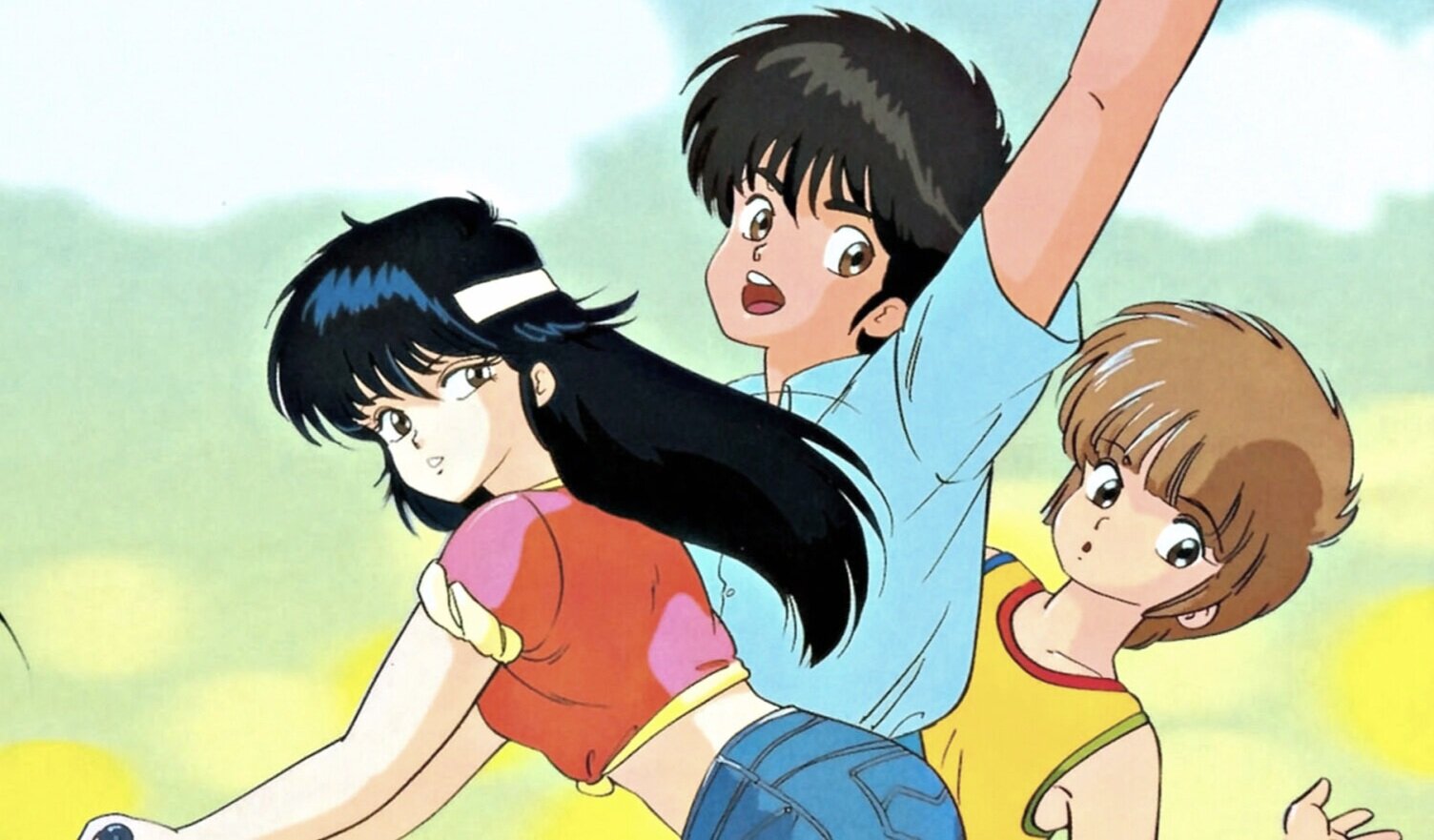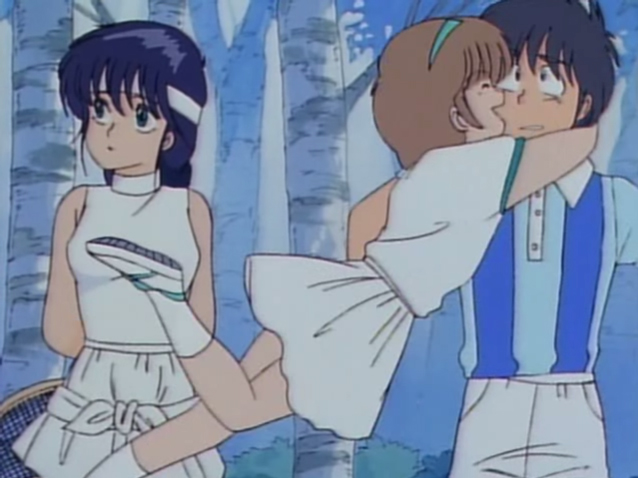
Earlier, I wrote about one of the foundational anime in my journey, Voltron: Defender of the Universe. Today, I’d like to talk about another such series: Kimagure Orange Road. Specifically, I want to focus on Ayukawa Madoka and why she’s a character who continues to captivate me.
What is Kimagure Orange Road?
Kimagure Orange Road is a manga series by Izumi Matsumoto. Weekly Shounen Jump printed it from 1984 to 1987 and collected it in 18 volumes. The story follows Kasuga Kyousuke, a seemingly average high schooler with an extraordinary secret—he and his family possess psychic powers. As a result, they need to constantly move to avoid detection. Eventually, they find themselves in a new town, where Kyousuke meets Ayukawa Madoka and her friend, Hiyama Hikaru. And, since this is manga, a love triangle ensues.
The iconic love triangle

When Kyousuke first meets Ayukawa, she appears to be cool, composed, and charming. Their initial encounter is flirtatious and friendly, but things quickly turn cold when they end up in class together. Ayukawa, known for her delinquent reputation, distances herself from Kyousuke, pretending not to know him.
In contrast, Hikaru, initially hostile toward Kyousuke, soon falls for him after witnessing his psychic powers. She switches from a reserved attitude to an over-the-top, bubbly persona, convinced that Kyousuke is the only man for her.
This leads to a love triangle. Kyousuke is caught between two very different women. Unfortunately, he’s indecisive. He enjoys the attention from Hikaru and isn’t willing to risk hurting her by being honest about his feelings.
Ayukawa’s struggle is especially complex. As time passes, she develops clear feelings for Kyousuke. But she stays distant becuase of her deep loyalty to Hikaru. It’s a tightrope act, balancing her emotions for Kyousuke against her love for her childhood friend. She constantly puts her own feelings last. This emotional conflict forms the core tension of the series.
Why does she hate me so much? A look at tsundere types
Ayukawa is an iconic tsundere —a character who initially comes off as cold, distant, or even hostile before eventually showing affection. At first glance, she may appear unapproachable, but as the series progresses, it becomes clear that there’s much more beneath the surface. Ayukawa isn’t a bad person. Instead, she’s trapped between opposing forces. She wants to be with Kyousuke, and she wants to support her friend Hikaru.
What makes tsunderes like Ayukawa appealing is their vulnerability. Sometimes you can get a glimpse of it behind their mask. Ayukawa acts cold toward Kyousuke in public, but her private feelings are undeniable. Her actions make sense when you consider her strong sense of loyalty to Hikaru. It’s not that she doesn’t love Kyousuke; it’s that she’s willing to sacrifice her own happiness for Hikaru’s.
As a fan, I can empathize with and understand Ayukawa’s inner turmoil. I root for her to finally accept her feelings and allow herself to be happy, even though it means causing unhappiness for someone else. Sometimes I just want to yell at her and say “Just tell him how you feel already!”. That’s part of the fun of tsundere characters!
What’s so good about Kimagure Orange Road?
While the love triangle is central to the plot, Kimagure Orange Road is so much more than just a story about romantic conflict. It’s filled with quirky, humorous moments, from time travel and body swaps to the antics of Kyousuke’s perverted friends and meddling relatives. If you’ve ever watched the show, you know that it’s funny, adventurous, romantic, and even sometimes raw.
For me, Kimagure Orange Road is one of those stories that hits all the right notes. It’s charming, funny, and filled with moments that keep you coming back. Kyousuke’s indecisiveness, Hikaru’s over-the-top affection, and Ayukawa being torn between the two all make the series work.
OK but what’s better? The manga or the anime?
The manga was adapted into a popular 48-episode anime series, 10 OVAs, two movies, and novels. The anime can be a bit slow-paced at times. For me, the scenes of Ayukawa playing her saxophone seem especially interminable. But despite these complaints, the series offers a satisfying conclusion in its first movie, with the second movie providing a fantastic coda to the story.
More recently, the Kimagure Orange Road manga was finally officially released in English, and I devoured the entire series. The manga is faster-paced than the anime, and it includes subplots and characters that didn’t make it to the anime. There are differences in tone and pacing, but overall, the manga has the same whimsical, nostalgic feel. Comparing the two, I can’t decide which is better, they are just different, each presenting their own version of the story well.
Finally, I’d need to talk about Kimagure Orange Road’s absolutely fantastic music. The series released multiple CDs of both opening and ending themes, as well as the incidental soundtrack. The opening and ending themes are perfect 1980s Japanese pop music. They’re seared into my brain, and I smile every time I hear them. Even the second movie, released in 1996, features a fantastic theme that ties into the story, with an ending song that gives me goosebumps when it kicks in.
Conclusion
Kimagure Orange Road is underrated in the West, but I think it’s a gem for those who are willing to dive into its whimsical, capricious, and well, kimagure world. I hope you give this one a chance, and if you already know and love it, maybe it’s time to revisit it.
Kasuga Kyousuke, juugo sai, seishun shitemasu!